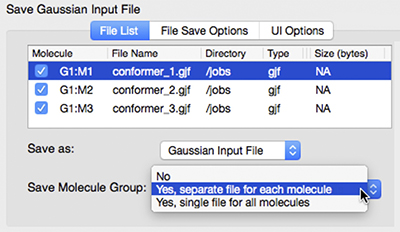Gaussian Manual Scrf


Gaussian manual scrf. The available keywords are listed at the end of the manual section for the SCRF keyword.
SCRF DESCRIPTION This keyword requests that a calculation be performed in the presence of a solvent by placing the solute in a cavity within the solvent reaction field. The Polarizable Continuum Model (PCM) using the integral equation formalism variant (IEFPCM) is the default SCRF method. This method creates the solute cavity via a set of overlapping spheres.
It was initially devised by Tomasi and coworkers and Pascual-Ahuir and coworkers [,,,,,,,,,,,,,,,,,,, ]. This model corresponds to SCRF=PCM. See [] for a recent review. The model of Chipman [] is closely related to this method []. Other available models are IPCM, which uses a static isodensity surface for the cavity [], the Self-Consistent Isodensity PCM (SCIPCM) model [], and the Onsager model [,,,,, ], which places the solute in a spherical cavity within the solvent reaction field. Many aspects of the PCM implementation have changed from Gaussian 03.
In Gaussian 09, we use a continuous surface charge formalism that ensures continuity, smoothness and robustness of the reaction field, which also has continuous derivatives with respect to atomic positions and external perturbing fields []. This is achieved by expanding the apparent surface charge that builds up at the solute-solvent interface in terms of spherical Gaussian functions located at each surface element in which the cavity surface is discretized. Discontinuities in the surface derivatives are removed by effectively smoothing the regions where the spheres intersect. This formalism, initially proposed in 1999 by Karplus and York for the conductor screening model [], never received the attention it deserved.
In Gaussian 09, we develop and generalize it within the framework of the PCM family of solvation methods, and it is now the default method for building the solute’s cavity and computing the reaction field. The PCM method in Gaussian 09 includes an external iteration procedure whereby the program computes the energy in solution by making the solvent reaction field self-consistent with the solute electrostatic potential (the latter being generated from the computed electron density with the specified model chemistry) [, ].
The difference with the standard approach (based on the variational approach or linear response theory) can be illustrated with MP2. The default procedure computes the solvent effect on the SCF density and then applies MP2 perturbation, while the external iteration approach computes the solvent effect self-consistently with respect to the MP2 density. While this technique is of primary interest for studying excited state processes such fluorescence, it can also be used for ground state calculations with theoretical methods that provide gradients: e.g. Post-SCF methods. Use the ExternalIteration option to specify this method.
SOLVATION AND EXCITED STATES There are two basic approaches available for modeling excited states in solution: • Computing the lowest excited states in the solvent environment. This approach, which was also available in Gaussian 03, adds SCRF to a normal excited state calculation such as TD or CIS.
This technique employs a linear response formalism by adding the necessary terms to the excited state method equations (thereby including the solvent effects on the excited states) [, ]. In Gaussian 09, the geometry of a specific excited state can be optimized in solution with CIS or TD []. • A single excited state can be modeled via a state-specific approach.